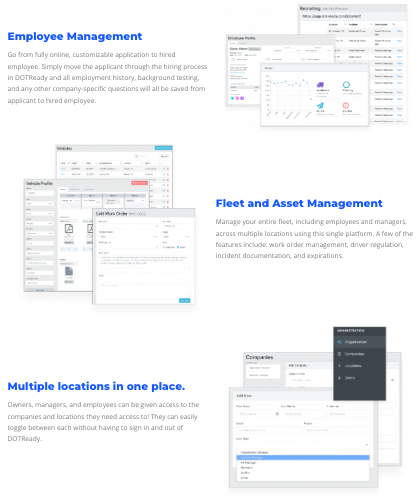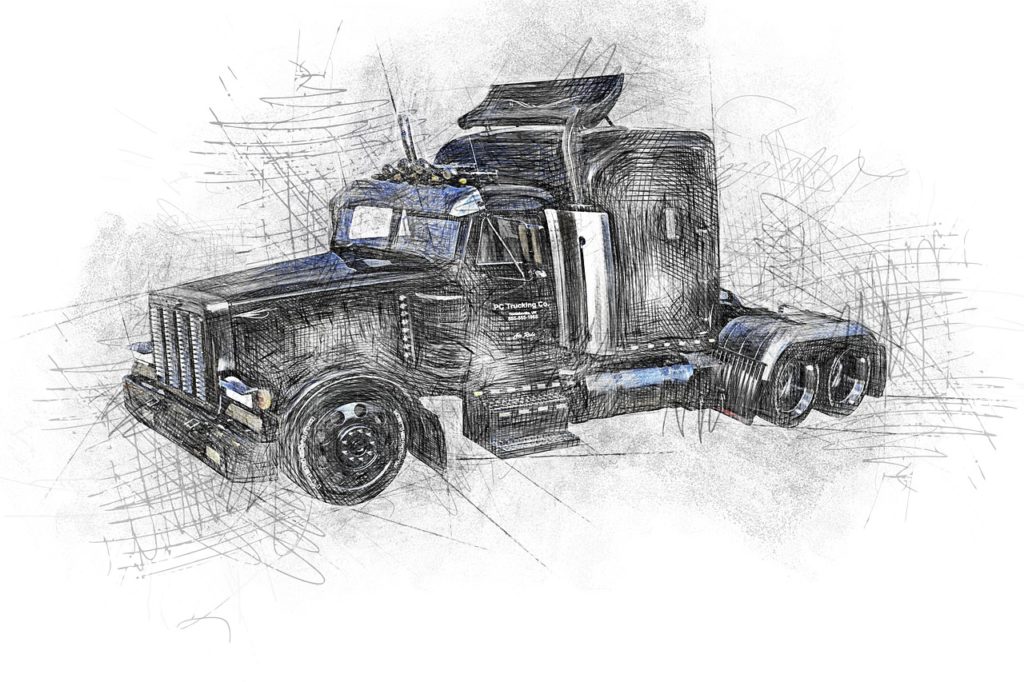With the trucking industry becoming more tightly regulated, it would seem like trucking accidents would be on a downtrend. Unfortunately, this is not the case. The trucking industry as a whole has seen an increase of fatal accidents over the past decade.
Here are some useful technologies that can be integrated with any fleet to reduce accidents and provide fleet supervisors with more clarity into at risk drivers, risky routes, and other factors influencing the likelihood a company will have an accident on the road.
Fleet Management Software
The first thing companies can do to improve their fleet’s safety is integrate with a fleet management software that stores information about driver performance, violations, past driving records, D&A use, and medical exams in an easy to access platform like DOTReady.
The benefits of having a fleet management software is that supervisors will be able to see which drivers on the roster pose the most risk for their company, as well as having the ability to weed them out before allowing them to drive anything.
With DOTReady, for example, companies can automate and streamline:
- Company Policy Creation & Management
- Driver Recruiting
- Driver Hiring Processing
- Incident Reporting & Processing
- Employee FMCSA Compliance
- Asset Maintenance Records
- Employee Training
- Mock DOT Audits
- Compliance and Operational Consulting
- Pre-FMCSA Audit Preparation
- Post-FMCSA Audit Restoration
- Hours of Service Audits / Monitoring

Lane Assist & Following Distance Technology
ADAS (advanced driver assistance systems) was first integrated with vehicles in the 1950’s. It started with features like Anti-Lock braking systems, blind spot monitors, electronic stability control, lane departure warnings, adaptive cruise control, and traction control.
Today, trucking companies can use systems for notifying drivers about unsafe following distances and other real time warnings that put the truck and driver at risk of getting into an accident.
Other features of the technology might include:
- Pedestrian detection/avoidance
- Traffic sign recognition
- Lane centering assist
- Crosswind stabilization
- Driver drowsiness detection
- Intersection assistance
- Parking sensors
- Tire pressure monitors
- Wrong way driving warning
- Hill start assist
- Backup cameras
- Tire pressuring monitoring systems
While some insurance providers will offer driver assistance monitoring devices to their clients, the downside is that the data is then used by the policy provider to control insurance rates. Another issue with these systems in the past has been the use of them in litigation, sometimes times not producing the desired result for the device owner.

Load Planning Software
Load planning softwares are used by companies to better sequence the order of freight that is going in transit. Arranging the freight in a specific order allows for transportation efficiency improvements on the road and at the destination.
When companies use Load Planning Software, the time it takes to unload the freight becomes the minimum amount necessary. To put it simply, freight optimization & planning software measure the internal volume of containers and make the most of every cubic inch.
Some popular providers of load planning software are (in no order):
- EasyCargo
- SeaRates Load Calculator
- CargoWiz
- CubeMaster


